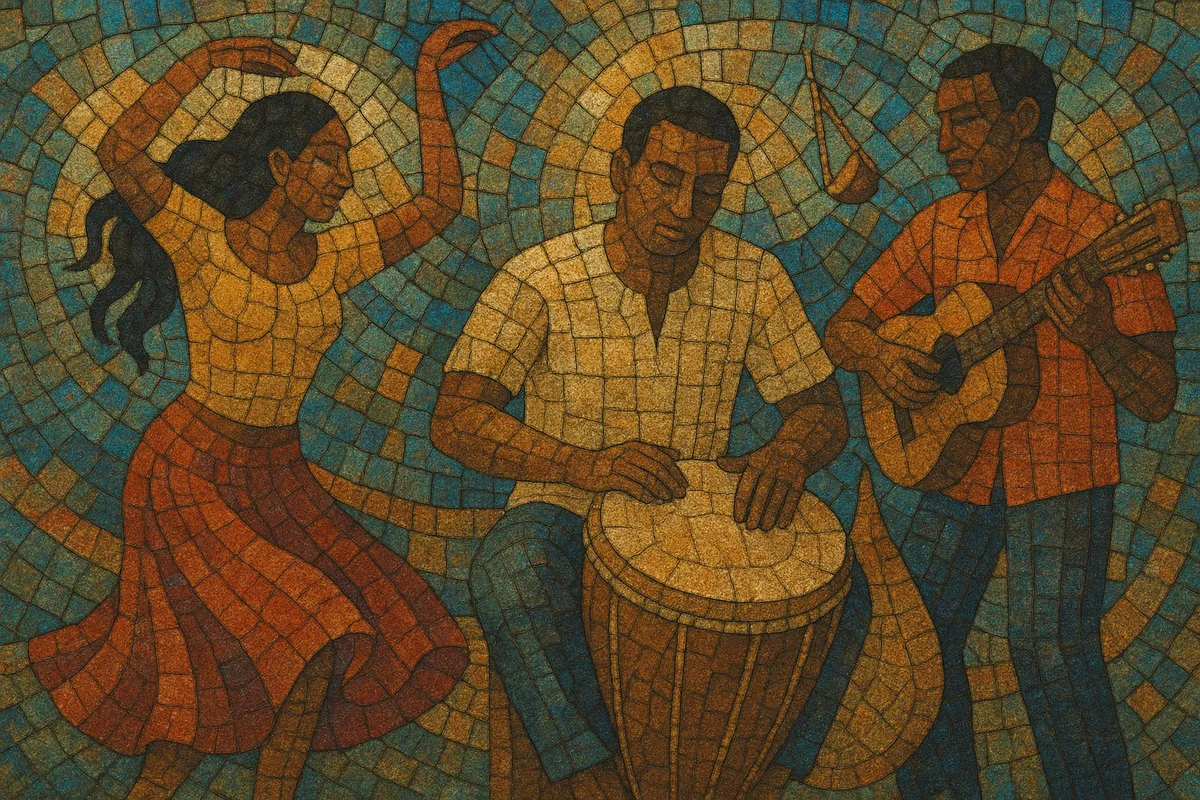Séga is a Creole dance‑music tradition from the southwest Indian Ocean, most closely associated with Mauritius (and also present in Réunion and Rodrigues). It is built on hand percussion, call‑and‑response singing, and a lilting, swaying groove that invites circular hip movements.
Traditional ensembles center on the ravanne (a large frame drum), the maravanne/kayamb (a shaker made from dried sugarcane flower seed pods), and a metal triangle. Modern bands often add guitar, bass, keyboards, and drum kit while preserving the characteristic beat. Lyrics are typically in Mauritian Creole and speak with wit and warmth about everyday life, love, celebration, and social observation.
Rhythmically, séga usually leans on a gently swung, buoyant pulse (often felt in 6/8 or a swaying 4 subdivided in three) with interlocking percussive patterns. Harmonies are simple and major‑key leaning, supporting singable melodies and refrains.
Séga emerged among enslaved and marooned African and Malagasy communities on Mauritius and neighboring islands. Using accessible materials (goatskin frame drums, seed‑pod shakers, metal triangles), they forged a communal dance music with call‑and‑response vocals and a swaying, trance‑tinged groove performed at night gatherings and beachside festivities. European colonial society often stigmatized or restricted the practice, which helped keep it community‑rooted and orally transmitted.
After abolition in the 19th century, séga became more visible at public celebrations and village fêtes. Elements of European folk dance and song (brought by French settlers and sailors) mingled with African/Malagasy rhythms. Guitars and accordions began appearing alongside the ravanne and maravanne/kayamb, while Mauritian Creole solidified as the main lyrical language.
From the 1950s–60s, the first commercial recordings and radio broadcasts helped codify a modern, stage‑ready séga. Iconic singers popularized the style beyond local fêtes, while amplified instruments (electric guitar, bass, drum kit, keyboards) were adopted—without abandoning the core percussion and dance feel.
From the 1980s onward, séga interacted with global pop and Caribbean currents, giving rise to fusions and socially engaged songs. The best‑known hybrid is seggae (séga + reggae), which paired the ravanne/kayamb pulse with one‑drop grooves and protest lyrics. Today, both "séga tipik" (traditional) and modern séga thrive at weddings, concerts, and festivals across the Indian Ocean, with UNESCO recognition underscoring the tradition’s cultural importance.
Séga tipik of Mauritius has been recognized on UNESCO’s lists of Intangible Cultural Heritage, affirming the music’s role as a living emblem of Creole identity, resilience, and celebration.


